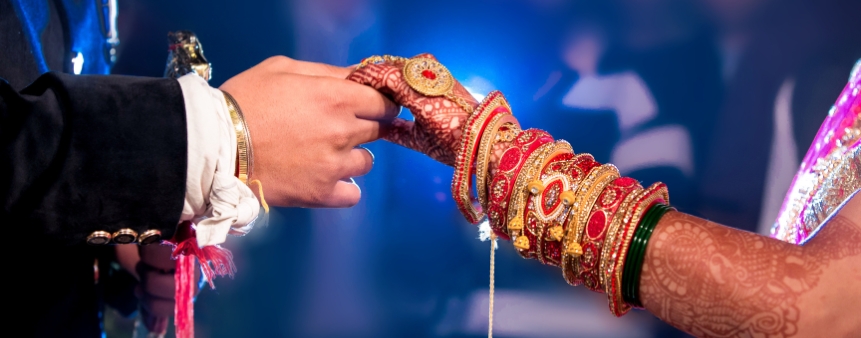Talk to India's best Astrologers
First Consultation at ₹1 only
Login
Enter your mobile number
Bengali weddings are a grand celebration of love and commitment between two people. We know them for their elaborate rituals, vibrant decorations, and rich cultural heritage. People typically spread the wedding celebrations over several days, with each day having significance and customs. Traditions add more fun and make weddings grand. All rituals are small steps taken by couples to stay committed officially forever. Bengali rituals have a lot of positivity and are filled with joy. Below are the Bengali marriage rituals step by step.
These all include Bengali wedding or Bengali Biye rituals.
The Bengali engagement ceremony is when the groom and bride exchange rings and seal the marriage.
The wedding feast, known as the "Bashi Biye", is a grand affair with an elaborate spread of traditional Bengali dishes. Their family members serve the couple food, and the meal is followed by the Saat Paak ceremony, where the bride and groom take seven vows of love, commitment, and respect towards each other.

One of the highlights of Bengali wedding traditions is the cultural music and dance performances. The wedding guests are treated to a mesmerising display of traditional Bengali folk dances, accompanied by the beats of the Dhol, Tabla, and other musical instruments.
Following the Bengali wedding, the bride and groom eat Bashor Jaga, a meal shared with other family members.After this, they conclude with the Bidai ceremony, where the bride says goodbye to her family and leaves for her new home with her husband. The bride's family showers her with rice, flowers, and good wishes, symbolising their love and blessings for the couple's future. The Bengali bride and groom's home is where this final dinner as a unmarried is served.When the couple visits the bride's family and stays there for a day or two, the family's eldest members untie the knot, which signifies the end of a marriage; it is usually done on the eighth day of the wedding. Lastly, the Ashtamangala ritual in Bengali marriage is a special post wedding ritual which sees the couple visiting the bride’s family.
Bengali Marriage symbols are a celebration of love, culture, and traditions. The elaborate rituals and customs bring together families and communities to rejoice in the joy of two people starting a new life together. The wedding is a beautiful testament to the rich cultural heritage of Bengal and its deep-rooted traditions. The wedding ceremony includes a lot of joy, but at the back of the mind, it also makes the bride's side emotional. This is because it marks the beginning of new life with a partner that will include love and fights. Therefore, the Bengali wedding is done with a lot of joy, and both the families make a good connection and bless the couple for their new life together.